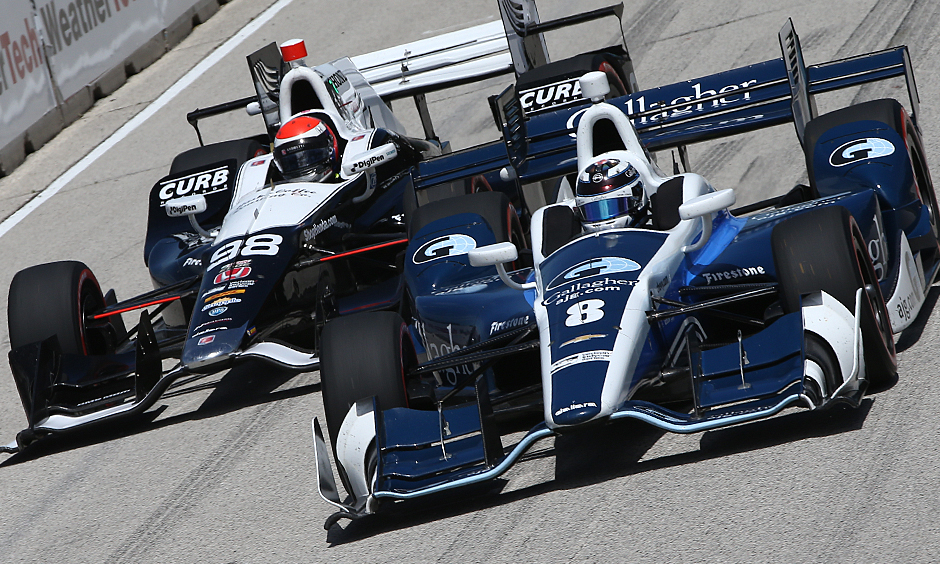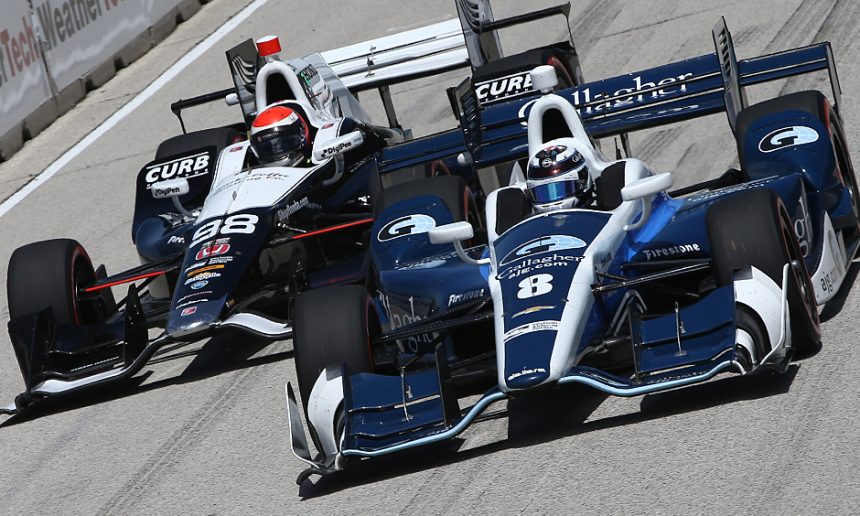When it comes to the world of motorsport, few spectacles are as thrilling as Formula 1 and IndyCar racing. Both disciplines attract passionate fans, boast cutting-edge technology, and feature some of the most talented drivers on the planet. However, beneath the surface of roaring engines and dazzling speed lies a fascinating world of difference between driving F1 racers and IndyCars. From the sleek, aerodynamic designs to the unique race strategies employed on various circuits, each series presents its own set of challenges and rewards.
In this article, we will delve into the key distinctions that define these two iconic forms of racing, exploring how speed, style, and strategy shape the experiences of both drivers and fans alike. So buckle up as we take you on a journey through the thrilling landscapes of F1 and IndyCar, revealing what makes each series a unique and exhilarating adventure on wheels!
Understanding the Speed Dynamics of F1 and IndyCars

When it comes to speed dynamics, F1 and IndyCars both showcase remarkable engineering and technology, yet their approaches vary significantly. F1 cars are designed for rapid cornering and high-speed straights, utilizing advanced aerodynamics and lightweight materials. This allows them to achieve exceptional downforce, which is crucial for maintaining grip while navigating complex tracks filled with sharp turns. In contrast, IndyCars are optimized for super-speed oval racing, featuring a more robust design to endure higher speeds on longer straightaways. While both race types demand precision driving, the distinct characteristics of each vehicle profoundly influence their overall performance and speed capabilities.
The strategic differences between the two racing styles further enhance the understanding of their speed dynamics. F1 races typically incorporate a series of complex technical strategies, wherein teams must carefully manage tire degradation and fuel consumption. The variability in track conditions often leads to strategic pit stops and tire selections that can significantly impact lap times. On the other hand, IndyCar races focus more on drafting techniques and positioning, allowing drivers to maximize speed through aerodynamic slipstreams. The emphasis on teamwork and communication, especially during the critical moments of a race, is vital in both formats but is particularly pronounced in the team-oriented IndyCar environment.
Exploring the Unique Design and Aesthetics of Racing Machines
The world of racing machines is a dazzling showcase of engineering prowess and aesthetic beauty, where each design element serves a purpose while contributing to the overall spectacle. Formula 1 cars are known for their sleek, aerodynamic shapes that are often complemented by intricate paint jobs and sponsor logos. The low-slung chassis, aggressive front wings, and high-rear wings not only enhance performance but also create a striking visual impression on the track. In contrast, IndyCars offer a more robust appearance with their stout bodies and larger tires, designed to endure the rigors of oval racing. Their distinctive visors, flared side pods, and bold color schemes reflect the rich tradition of American motorsport and its unique engineering approach.
When it comes to strategy, the design differences further influence the racing styles of both categories. F1 machines emphasize cornering speed and precision, with elaborate input from aerodynamics and lightweight materials. Their advanced technologies are often coupled with strategies that exploit the nuances of street circuits and permanent tracks alike. On the other hand, IndyCars are built for versatility, excelling in both road and oval racing, where strategic pit stops and tire management become crucial. Below is a simple comparison that highlights key design and strategic elements of both racing machines:
| Aspect | Formula 1 | IndyCar |
|---|---|---|
| Aerodynamics | Complex, tailored for downforce | Balanced for speed and stability |
| Chassis Design | Lightweight carbon fiber | Sturdier composite materials |
| Styling | Sleek, modern aesthetics | Bold, traditional designs |
Strategic Approaches: How F1 and IndyCar Drivers Tackle the Track
Drivers in both F1 and IndyCar employ distinctive strategies to maximize performance on the track, reflecting the unique demands of each racing series. In Formula 1, where precision engineering and aerodynamic efficiency play pivotal roles, drivers often focus on smooth cornering and optimal racing lines. They utilize advanced technology and telemetry data to fine-tune their approaches, employing strategies like tire management and pit stop timing to gain crucial seconds. The ability to adapt in real-time to changing weather conditions and track surfaces is also vital, enabling F1 drivers to capitalize on any opportunities that arise during the race.
Conversely, IndyCar drivers face an entirely different set of challenges that require a more aggressive style. With ovals dominating the series, strategies often revolve around drafting and high-speed maneuvers, where maintaining momentum is key. In these scenarios, drivers must carefully calculate their positioning relative to competitors to minimize air resistance while maximizing speed. Furthermore, fuel strategy becomes critical, as drivers must balance their pace with fuel consumption, making decisions on whether to push hard or conserve energy based on race dynamics. Ultimately, both F1 and IndyCar drivers exhibit remarkable skill but adapt their strategic approaches to the distinct characteristics of their environments.
Adapting Your Driving Style: Lessons from the World of High-Speed Racing
High-speed racing, particularly in the realms of F1 and IndyCar, reveals invaluable insights into driving techniques that can enhance anyone’s skills on the road. One of the primary lessons from these professional settings is the importance of anticipation and decision-making. F1 drivers thrive on the split-second evaluations they must make to navigate complex circuits, while IndyCar drivers often encounter varying track conditions and need to adapt their strategies accordingly. Each race, regardless of the series, emphasizes the need for situational awareness, allowing drivers to read the track and predict the movements of competitors. By incorporating these strategies into everyday driving, individuals can significantly improve their response times and maneuverability in dynamic situations.
Moreover, the two racing formats highlight different braking techniques and cornering strategies that are essential for optimizing speed and control. F1 cars typically require drivers to brake later and harder into corners, leveraging extreme downforce for better grip. Conversely, IndyCars demand a smoother approach with gradual braking to maintain momentum over ovals and road courses alike. By understanding these fundamental differences, regular drivers can experiment with their own braking patterns and steering inputs, ultimately enhancing their performance and comfort behind the wheel. Adapting these high-speed lessons into daily driving not only fosters safer habits but also promotes a thrilling engagement with the art of driving.
Q&A
Q1: What are the main differences in speed between F1 racers and IndyCars?
A1: The primary difference in speed comes from the design and aerodynamics of each car. F1 cars are built for tight corners and high-speed tracks, allowing them to reach speeds of over 230 mph in some cases, particularly on long straights. IndyCars, while also incredibly fast, typically race on ovals where they can hit similar speeds, but they emphasize both speed and endurance due to longer race lengths. The engines and weight distribution also play a crucial role, with F1 cars often more focused on intricate engineering to maximize speed in varied conditions.
Q2: How does the driving style differ between F1 and IndyCar?
A2: Driving styles in F1 and IndyCars reflect their distinct characteristics. F1 drivers often utilize finesse and precision, navigating tight corners and varying track surfaces with a heavy reliance on tire management and aerodynamic grip. In contrast, IndyCar drivers often adopt a more aggressive approach, especially on oval tracks, where they may navigate high-speed turns without the same level of downforce as F1 cars. This results in a more dynamic racing experience with frequent overtaking and strategic drafting maneuvers.
Q3: What role does strategy play in both types of racing?
A3: Strategy is vital in both F1 and IndyCar, but the focus often differs. In F1, teams must manage complex tire strategies, pit stops, and car setups for various circuits, with a strong emphasis on qualifying performance influencing race outcomes. On the other hand, IndyCar racing strategies often revolve around fuel management and timing of pit stops, especially in longer races that incorporate both road courses and ovals. The variability of track conditions on road courses also means that weather and tire choices can play a pivotal role in IndyCar races.
Q4: Are there significant differences in car technology between F1 and IndyCars?
A4: Yes, there are notable differences. F1 cars are at the forefront of automotive technology, featuring advanced telemetry, hybrid power units, and complex aerodynamics. This cutting-edge technology allows teams to innovate continuously. IndyCars, while also technologically advanced, adhere to a more standardized set of regulations to ensure competitive parity across teams. This results in less variation in technology, but still incorporates high-performance elements like turbocharged engines and adjustable aerodynamics.
Q5: Which type of racing is considered more physically demanding for the driver?
A5: Both F1 and IndyCar racing are physically taxing, but they demand different skills. F1 drivers face high G-forces and must maintain peak concentration during intricate maneuvers over shorter, more variable circuits. The intense braking and cornering require exceptional neck and core strength. IndyCar drivers, especially those on oval tracks, must endure prolonged periods at high speeds, which calls for endurance and physical stamina, as well as the ability to withstand the effects of sustained lateral G-forces.
Q6: For fans, what are the key attractions of F1 versus IndyCar racing?
A6: F1 offers fans a blend of glamour, cutting-edge technology, and a global spectacle with races in iconic locations. The drama of qualifying and the strategy involved in each race add to the allure. IndyCar, meanwhile, captivates with its emphasis on close racing and the excitement of oval tracks, where speeds and overtakes create thrilling moments. The accessibility of races in America and the unique mix of road courses and ovals make IndyCar highly engaging for fans who appreciate diverse racing formats.
Q7: what can we take away about the differences in F1 and IndyCar racing?
A7: while both F1 and IndyCar racing offer incredible speed, unique styles, and strategic depth, they cater to different tastes and showcase distinct aspects of motorsport. F1 prioritizes cutting-edge technology and finesse in racing, while IndyCar emphasizes speed, endurance, and close competition. Both series contribute richly to the motorsport landscape, providing fans with exhilarating experiences and thrilling races.
To Conclude
the world of motorsport is as diverse as it is exciting, with Formula 1 and IndyCar representing two thrilling facets of racing. While both disciplines showcase incredible speed and skill, their unique differences in design, strategy, and race formats create distinct experiences for both drivers and fans alike. From the high-tech innovations and aerodynamics of F1 to the intense wheel-to-wheel action and ovals of IndyCar, each series brings its own flavor to the track.
Understanding these differences not only enriches our appreciation for the athletes behind the wheel but also highlights the strategic depths that go into every race. Whether you prefer the precision of a Formula 1 circuit or the exhilarating speed of an IndyCar oval, both racing formats captivate audiences around the globe. So, whether you’re a long-time enthusiast or new to the sport, there’s always something thrilling to discover in the fast-paced world of motorsport. Happy racing!











